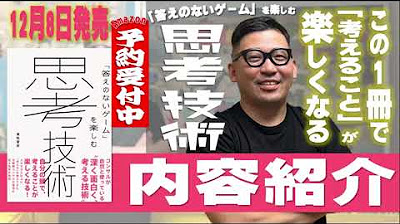Q & A Questions: How to Answer Any Presentation Question
Summary
TLDRこのスクリプトでは、質問に答えることに対する4ステップレシピを紹介しています。まず、質問者を見つめながら聴き、次に質問を要約し、その後は答えを提供し、最後に結論を導くというプロセスです。質問に答えることで、聴衆との信頼関係を築き、効果的なコミュニケーションが可能になります。また、質問を促すためのテクニックや、知らない質問にも答えられるようにする戦略も学びます。
Takeaways
- 🎯 質問に答えるとき、常に質問者を見つめておくべきで、それが聴衆に注意を集め、聴衆が質問に集中するのに役立ちます。
- 👀 質問を受ける際には、「何の質問ですか?」と聞き、質問者を見つめながら待つことで、質問の受け取りを確実に行えます。
- 🤔 質問を促すには、「何か質問ありますか?」ではなく、「トピックXに関する質問はありますか?」と具体的に尋ねることで、より具体的な質問を得られます。
- ⏱ 質問を促す際、自信に満ちた様子で頭を振りながら待つ。約6秒後には誰かが質問をします。
- 🗣️ 質問に答える際、常に質問を要約・言い換えることが重要で、それによって聴衆に理解を深めさせ、質問者への配慮を示すことができます。
- 🕒 質問の要約は、聴衆に質問内容を再確認させるだけでなく、思考の時間を稼ぐ効果もあります。
- 🃏 ポーカーフェイスが大切。質問が分からない場合でも、質問を繰り返すことで聴衆に答えが分かっているかのように見せることができます。
- 👥 質問を繰り返すことで、聴衆全員が質問内容を把握し、さらには質問に対する自分の理解を深めることができます。
- 📉 質問に答えるのが得意であればすぐに答えるが、分からない場合は質問を繰り返すことで、答えが分かっているかのように振る舞うことができます。
- 📝 質問に対する答えがわからない場合でも、常に答えが見つかるレシピを提供し、常に答えが分かっているかのように振る舞うことができます。
- 🔍 質問に答えることの3つのステップは、質問をフィールド(受ける)、レスポンス(回答)、そしてコンクルージョン(結論)にまとめることができます。
Q & A
どのようなステップがあると、質問に答えることができると言っていますか?
-スクリプトでは、質問に答えることの4ステップレシピを紹介しています。それらは、質問をフィールドする、質問に応答する、そして質問を締めるという3つの要素に加えて、分散注意を扱う方法も含まれています。
質問に答えるとき、なぜ目を相手に向ける必要があるのでしょうか?
-目を相手に向けることで、聞き取り、注意を払っていることを示し、相手が話している間も身体を動かさず、その人の言葉に集中するという意図を伝えます。
質問をフィールドする際の最初のステップは何ですか?
-質問をフィールドする際の最初のステップは、「あなたの質問は何ですか?」と聞き、その人を見つめながら待つことです。
質問を促すために何を言えばよいですか?
-質問を促すためには、「何か質問はありますか?」や「トピックXについて何か質問はありますか?」と尋ねることが効果的です。
質問がなかった場合、どのように対処するべきですか?
-質問がなかった場合、スクリプトでは「何か質問はありますか?」と尋ねた後、自信に満ちて静かに待つことが重要だと述べています。
質問に答える際に何を最初にすべきですか?
-質問に答える際には、まず質問を要約または言い換えることが重要で、これにより相手が聞かれていると感じ、また自身が質問を理解していることを示すことができます。
質問を言い換える際の利点は何ですか?
-質問を言い換えることで、相手が聞かれていると感じ、自身が質問を理解していることを示し、さらに聴衆全員が質問を理解する機会を提供し、思考の時間を稼ぐことができます。
プロのポーカープレーヤーが持っている「ポーカーフェイス」とは何ですか?
-「ポーカーフェイス」とは、感情や反応を隠して、手の強さを相手に知られないようにするテクニックです。質問に答える際にも、同じように感情を隠して、答えがわからない場合でも上手く振る舞うことが重要です。
質問に答えるとき、なぜ感情を隠すことが重要ですか?
-感情を隠すことで、聴衆に対して答えがわからない場合でも自信に満ちているかのように見せることができます。これにより、信用性や説得力を高めることができます。
スクリプトで紹介されるレシピとはどのようなものですか?
-スクリプトで紹介されるレシピとは、質問に答えることを万全に準備し、どんな質問に対しても上手く答えることができる方法のことです。このレシピに従うことで、答えがわからない場合でも上手く振る舞うことができるでしょう。
スクリプトの内容を理解するために、どのような追加の洞察や説明が必要ですか?
-スクリプトの内容を理解するためには、質問への答え方、フィールドの方法、感情を隠すテクニック、そして質問に答える際のポーカーフェイスの重要性についての洞察や説明が役立ちます。
Outlines

This section is available to paid users only. Please upgrade to access this part.
Upgrade NowMindmap

This section is available to paid users only. Please upgrade to access this part.
Upgrade NowKeywords

This section is available to paid users only. Please upgrade to access this part.
Upgrade NowHighlights

This section is available to paid users only. Please upgrade to access this part.
Upgrade NowTranscripts

This section is available to paid users only. Please upgrade to access this part.
Upgrade Now5.0 / 5 (0 votes)






